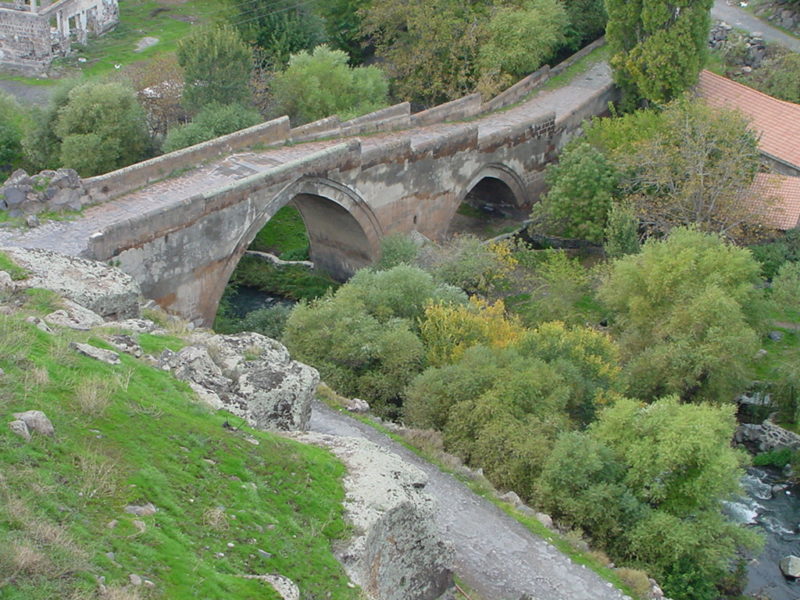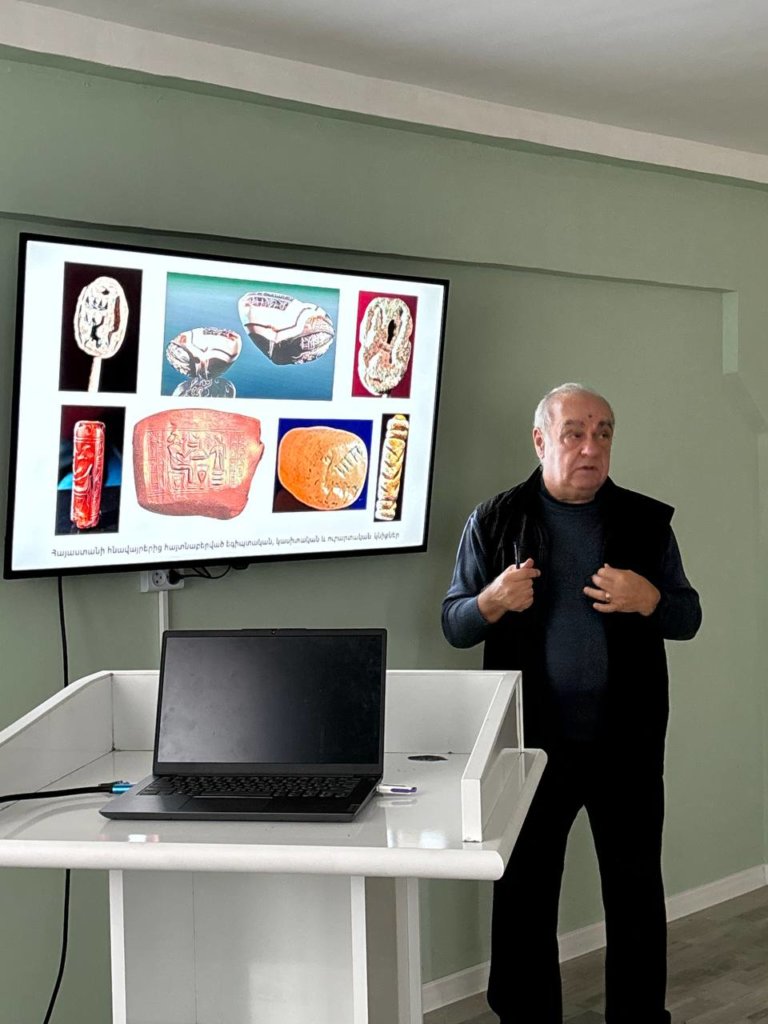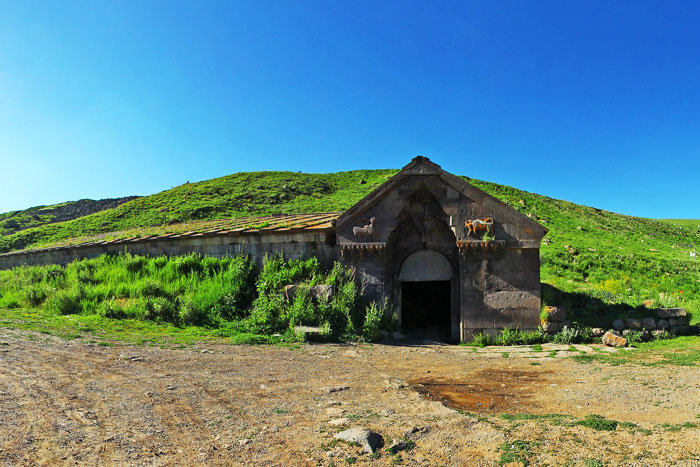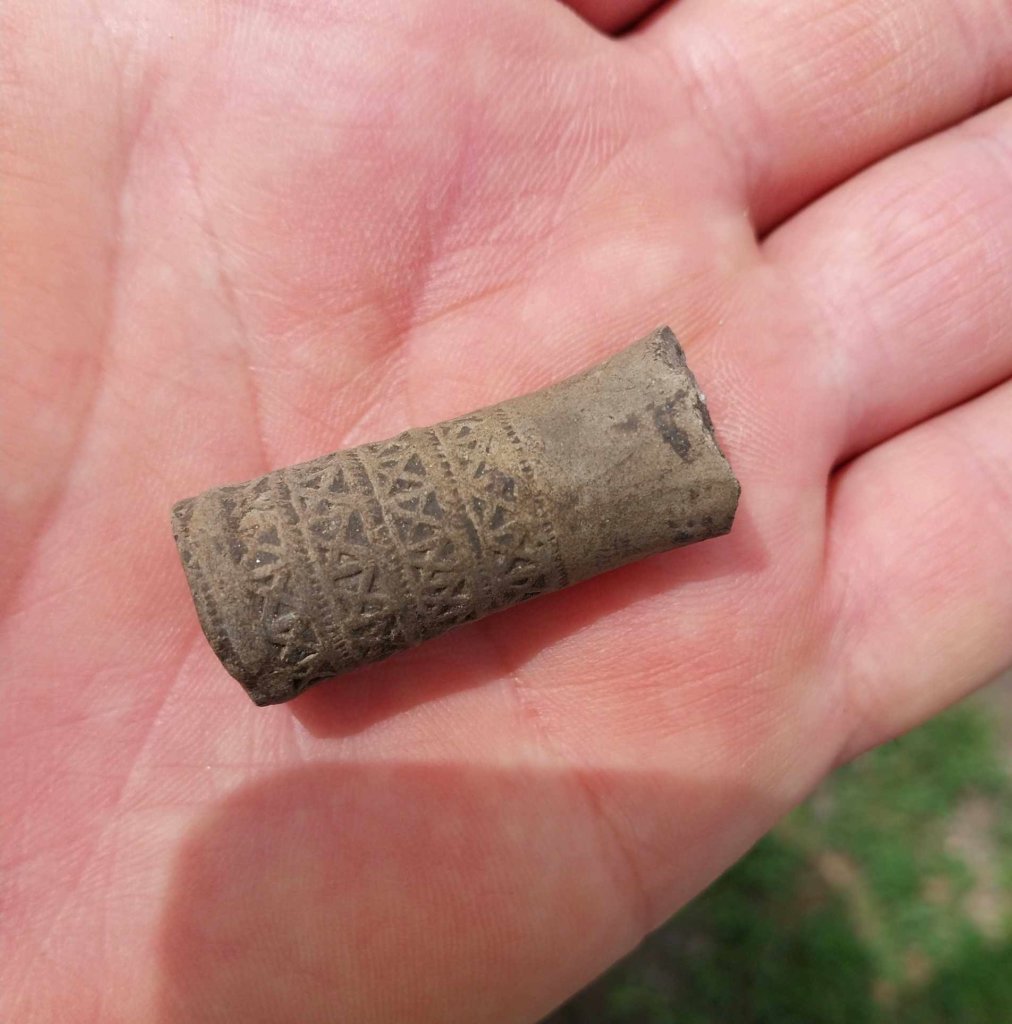Medieval Armenian churches used to be constructed firm and for long exploitation (vivid example is the medieval bridge built on Debed river . When in the spring of 1959 the new bridges in Alaverdi built on Debed were damaged, the medieval bridge was allowed to be used, which had not been damaged at all. It was Sanahin’s old bridge). The basic foundation for those bridges were the natural stones of Armenia: tuf, basalt, limestone, which were generally used in polished condition.
Among medieval Armenian bridges significant is Ashtarak’s bridge built on Qasakh river. According to historiographer Araqel Davrijeci, the bridge was built in 1664 by Motsakenc Mahtes Grigor, inscription about the latter is engraved between the large and small arches of the bridge. The historical bridge of Ashtarak belongs to the three-arched type of bridges. It is constructed of orange tuf stone. It’s one of the largest bridges of Armenia, the length is 76.2 metres, width is 6 metres, hiatuses are different: 7,5, 9,05, 11,4 metres.
It’s one of the best examples of historical bridge construction with its architectural technique. It has played an important role for the improvement of historical Armenia’s trade-economic relations and military dislocations.
Traditional saying tells that during the construction of the bridge’s foundation, the river carried the stones away. No matter how hard they tried to put the foundation, again the river carried the stones away. The elder of the village advised the masters to put the foundation from another place and in order for it not to get destroyed, bury an orphan girl alive in the walls. Masters found an orphan girl in the village, bought her from her mother-in-law and buried her in the wall of the bridge. The girl obeyed the workers obediently. After that the bridge never pulled down and was constructed successfully.
It is said the bridge is standing till today due to the bitter fate of the girl.
The bridge underwent necessary reconstructions in the 1950-60s and in 2004.







